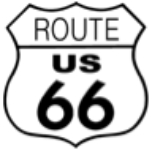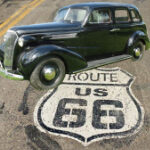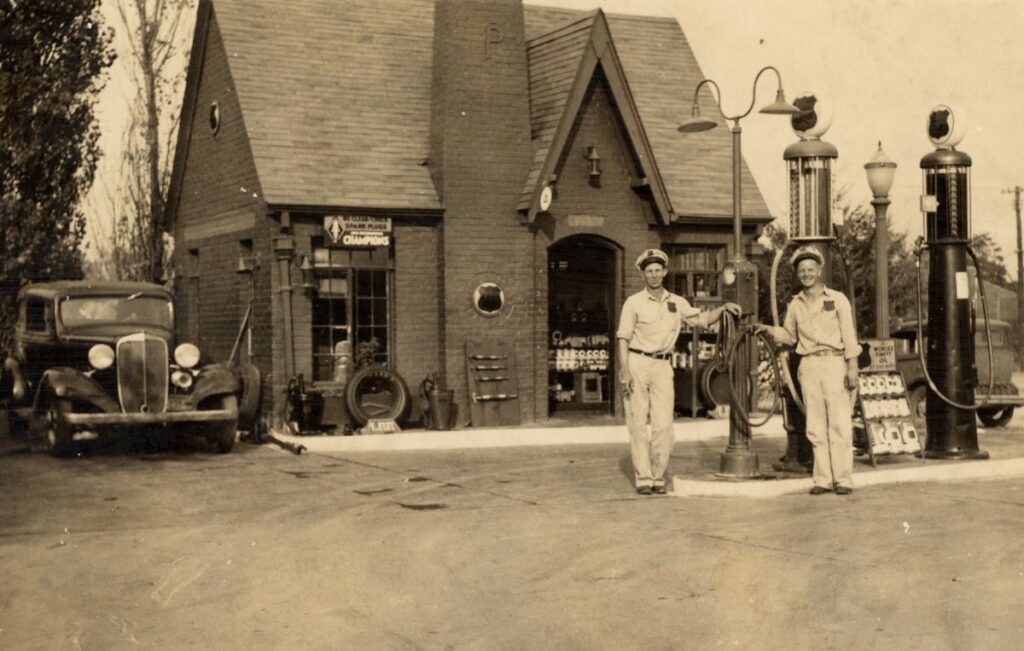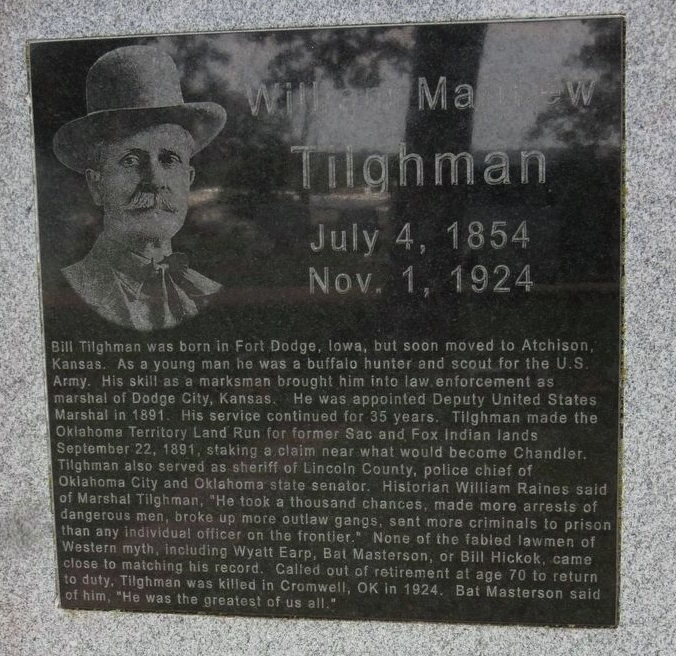The 1948 Route 66 Journey Begins.

On the south side of Chandler, the Atkins family turns along with Route 66, chasing the sun bright ahead of them, heading west as they will be until they reach California

When we were traveling, my father had a pet peeve just as Luke does in the book. He hated to make bathroom stops. You had to convince him that you actually did have need; he’d try to talk you out of it. Occasionally, it could get pretty uncomfortable. The saving grace was Mama. If she said she needed to stop, we stopped.
Daddy also had a big interest in the old west lawmen and outlaws, horse racing, boxing, and religion, which may not seem to go together, but on him they did. He wasn’t well schooled but he was well self-educated. He paid attention and picked up bits of information seemingly out of the air. And, evidently he had a high IQ; he could figure math problems in his head, even algebraic and geometry ones without ever having had a class beyond sixth grade math. In many ways, he was a wonder. My character Luke Atkins in Tumbleweed, my book in progress, is based on my father.
The Atkins family** leaves the Drumright and Stillwater area in their 1937 Chevrolet 4-door Sedan on Tuesday, June 1st, 1948 and travels south on Oklahoma Highway 18 toward Chandler, Oklahoma and U.S. Route 66.
It was the first day of their journey from their home in Oklahoma to California, and the beginning of several years of bouncing from place to place like tumbleweed blown by the wind. They had been on the road only an hour or so and everything was still fresh and new.
Route 66 comes into Chandler from the east, heading straight west on 1st Street and then angling southwest onto Mickey Clarkson Avenue to join Manvel Avenue and Highway18 heading south.
The family enters Chandler from the north on Highway 18 which curves east on East 1st Street and back south on Manvel Avenue and merges with U.S. Route 66 around 5th Street and Manvel Avenue.

A couple blocks later at 7th Street on their right, four-year-old Nancy sees a filling station that looks like a little house and says, “Daddy, I need to pee; can we stop there?”
The station was one of over 300 Phillips 66 Tudor Revival Cottage Style stations built by the company between 1928 and 1945.
Station #1423, 701 Manvel Avenue, Chandler OK (From www.66postcards.com)
Each station had a steep gabled roof, tall windows and a central chimney, and was initially painted a distinctive dark green with orange and blue trim. There were three gas pumps on the pump island.
The intent was to blend into residential neighborhoods, portray a home-like ambiance to lure the travelers by making them feel at home and comfortable.
It seems to work with young Nancy, but her father ignores her request to stop and drives on, telling her to be patient, he’ll stop soon.
Nancy thinks, but I wanted to stop there, and she really does need to go. She crosses her legs and sits tight and tense. She sees other service stations where her father could stop, but he passes them by. Luke has a pet peeve. When he travels, he doesn’t like to make bathroom stops. He thinks everyone can go when he stops for gas and that should be enough.

1940s 9th Street & Manvel Avenue (66postcards.com)
On the next block at 9th and Manvel Avenue, they have a good view of downtown, but Luke hurries through; he just wants to get out of the city and back on the open road, heading west. He has in mind where he wants to stop for the bathroom break where he will top off the gas tank.
South of downtown, Nancy sees yet another service station, this one with a service bay and a gas pump in front; they would have a bathroom, she thinks, but that is at the curve where Route 66 turns onto 15th Street and heads west again. Nancy looks at her daddy to see if he will stop, but he makes the turn and drives on.
About a mile further, after Highway 18 has split from 66 and turned south, and after crossing over Bell Cow Creek, Luke sees a sign posted beside a road turning to the right.
He says, “Hey. Oak Park Cemetery, right down that road – that’s where Bill Tilghman is buried.
“Who’s that?” Carl asks.
“He was a famous lawman and gunfighter in the old west, a long time friend of Bat Masterson; some say he got his start as Bat’s deputy sheriff in Dodge City Kansas where he lived before making the second Oklahoma land run in 1891 and settling in Chandler. Later he became Marshall of Lincoln County then an Oklahoma Senator”
“Did you know him?”

”No, I would have liked to though, but I was only a boy when he was killed in 1924, shot dead on the main street of Cromwell Oklahoma about 30 miles southeast of Chandler. The most dangerous outlaws in the territory, crack shots who never missed, had shot at him trying to kill him, but couldn’t. He sent more outlaws to prison than anybody, more than lawmen that were much more famous like Wyatt Earp, Bat Masterson, or Bill Hickok. They didn’t even come close to matching his record. Bat Masterson even said, “He was the greatest of us all.” Then, after all that, to be shot by a corrupt prohibition agent when he was 71 years old — what a shame.”
“In a gun fight?”
“No. It wasn’t really a gunfight. He came out of retirement when he was 70 and took the job of Marshall of Cromwell Oklahoma even though he lived in Chandler. Cromwell was a lawless oil boomtown, wide open — Dance halls, gambling, easy to get liquor. He was hired to clean it up.”
“Then how did it happen?”
“Bill told these two couples who were disturbing the peace that they were under arrest. One of the men fired a pistol in the air and a few minutes later there was another shot that killed Bill. It was Wiley Lynn, the crooked prohibition agent, and he just jumped in the car and fled.
“Did they get him?”
“Yes and no. They arrested him but he got off. The jury thought it was self-defense. Can you imagine that? It was just crooked all the way around. They didn’t want to loose their booze.”
“How come you know so much about stuff like that Daddy?” Carl asks.
“I don’t know, I hear things, and I just pay attention I guess, especially if it has to do with the old west. It’s interesting to me.”
They travel on, chasing the sun bright ahead of them.
Jo Wilburn
* * * * *
Notes:
**The Atkins Family: Luke (Father, 38), Grace (Mother, 29), Carl age 10,) Darla (age 6,) Nancy (age 4.)
Part 1 of my book Tumbleweed is the Atkins family’s 1948 journey west and all the incidents that occur along the way.
My parents made a real 1948 trip to California and my mother kept a diary, which I used in writing the fictional trip.
Because of my need to cut the word count of my book down significantly from nearly 130,000 words, many cuts are those that added to historical value rather than story. It makes me sad because I like those historical references. I hope that by presenting some of those here, I can share an authentic 1948 trip down Route 66 and add a little extra as I go without giving away too much of the Atkins Family story.
Credits:
- Jack DeVere Rittenhouse, (1946). A Guide Book to Highway 66
- Bill Tilghman facts: www.chrisenss.com, and www.waymarking.com
Image Credits:
- R66 Shield Transparent Tiny pngegg www.pngegg.com
- R66 Shield on Road with Car Photoshop (Personal pictures)
- Old Phillips 66 Cottage Station: www.66postcards.com
- 1940s 9th Street & Manvel Avenue www.66postcards.com
- Bill Tilghman historical marker www.hmdb.org
